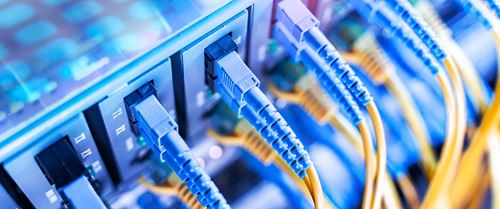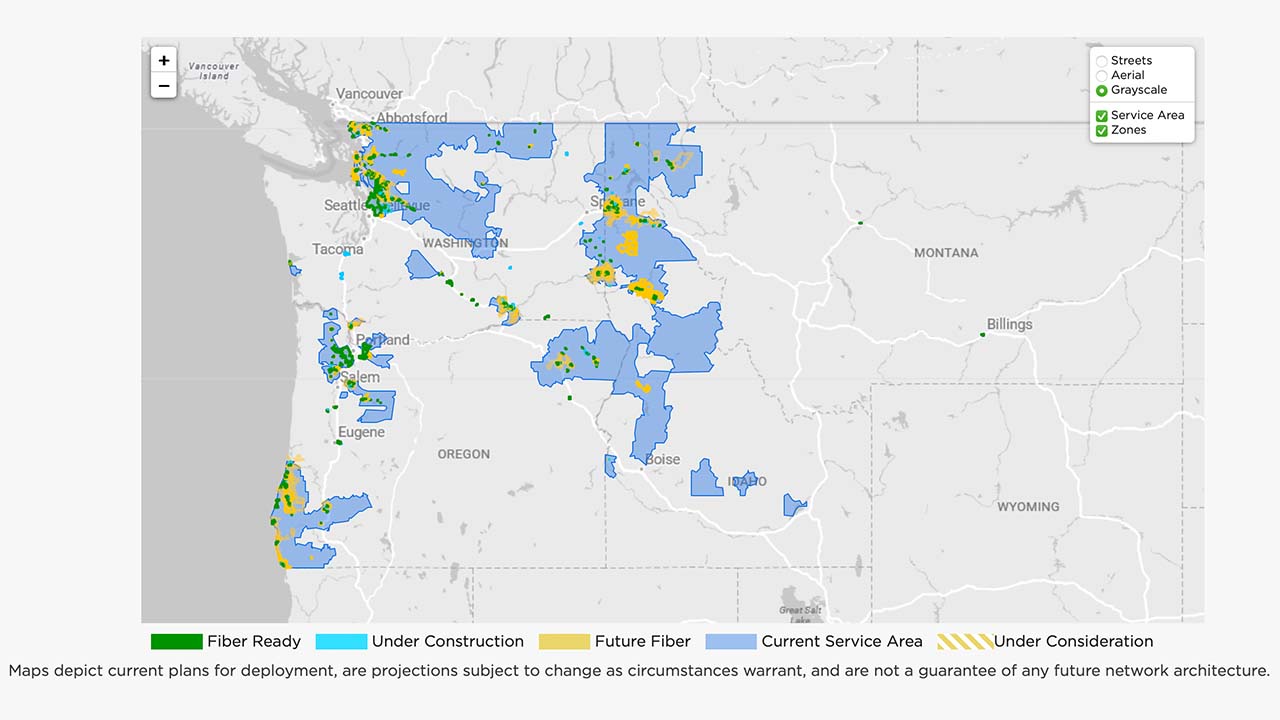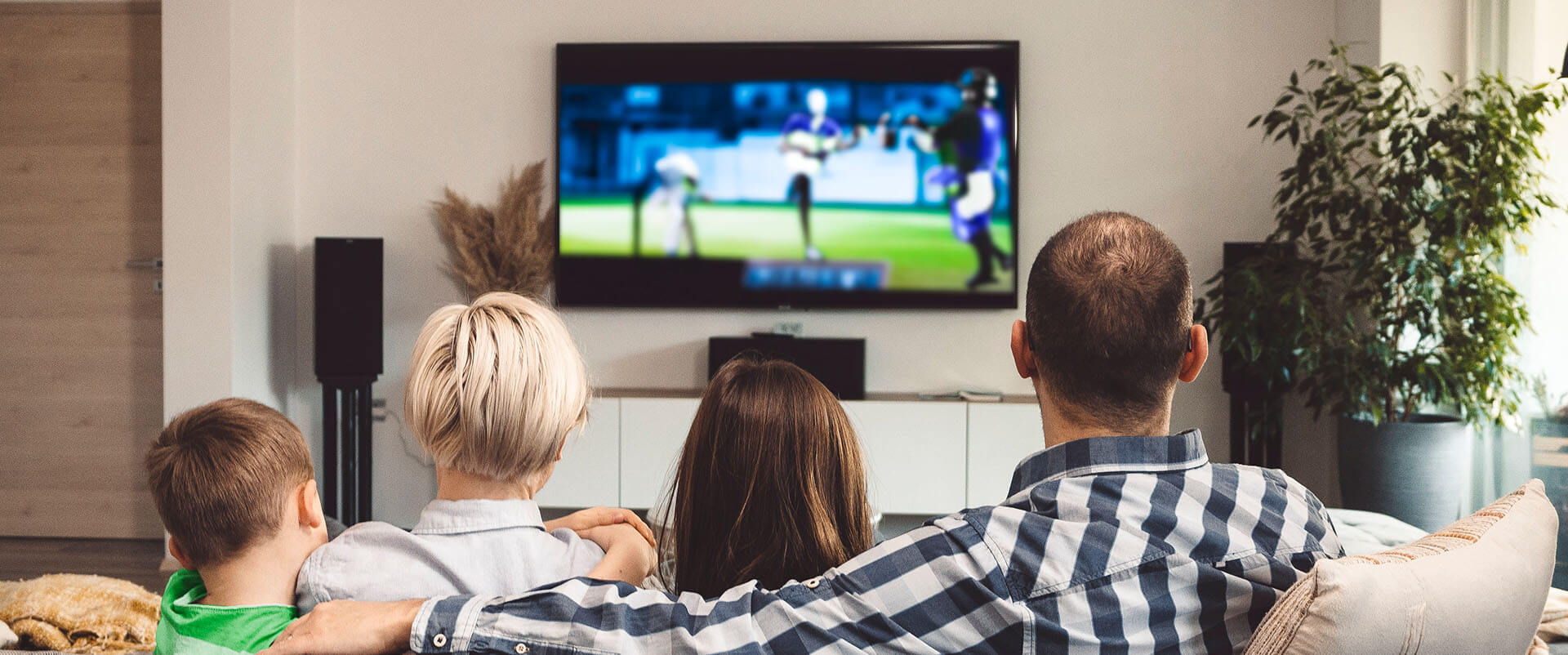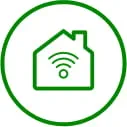When researching internet providers and plans, you’ll run into terms like broadband, cable, DSL and fiber-optic. What do these terms mean, and how can you be an informed consumer when choosing a new internet service?
Let’s start with broadband.
What is broadband internet?
Broadband is a term that encompasses many forms of internet connectivity. It refers to a high-speed internet connection that provides a wide range of data transmission and is always available. Basically, it’s a general term for modern internet that includes cable, Digital Subscriber Lines (DSL), satellite, broadband over powerlines, wireless and fiber-optic.
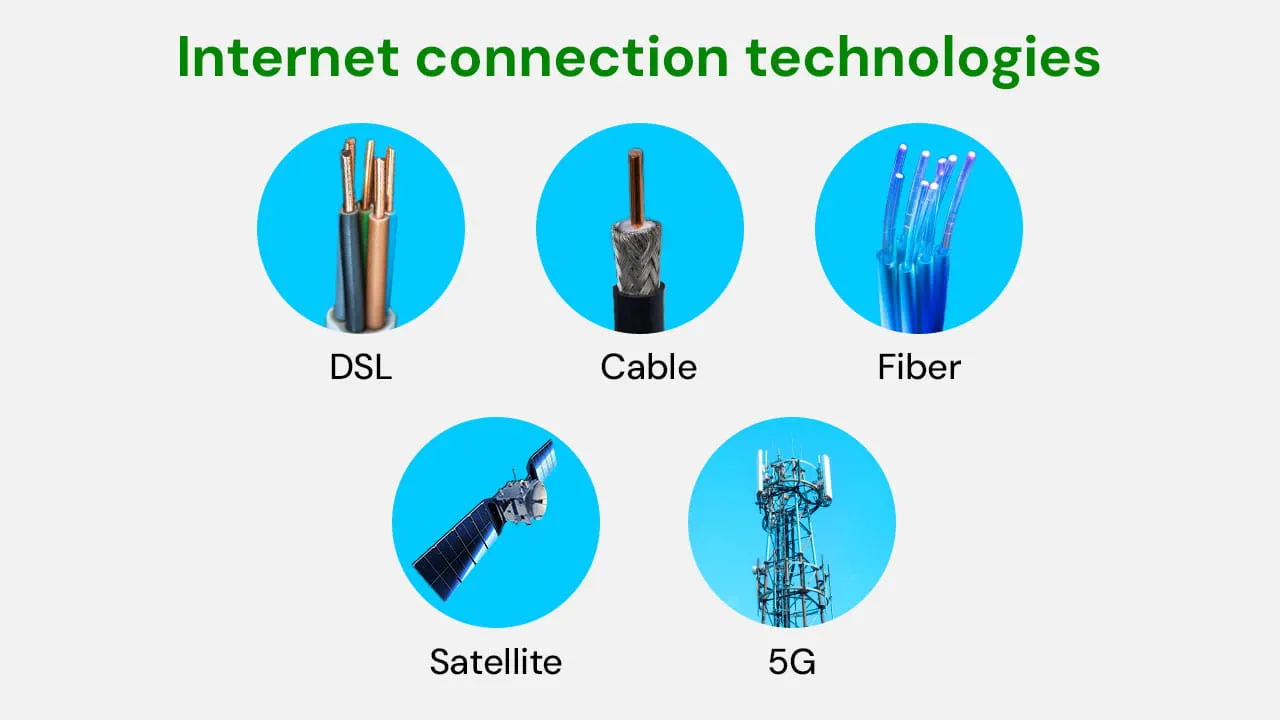
Let’s go through the most common forms of broadband connectivity.
Cable internet
The early 2000s saw the expansion of broadband as more people around the world discovered the wonders of the internet. Cable became the leading technology, which is why you may have a cable TV-phone-internet package.
Cable internet utilizes the same copper cable lines as your cable TV service. These lines were modified to handle internet, and cable has a track record of reliable performance. It's a solid choice for households that don't need multi-gig speeds but still want a smooth online experience. It’s also ideal for millions of households that prefer to watch cable TV.
However, cable comes with some drawbacks, including asymmetrical speeds, meaning that the upload data speed is always considerably slower than download speed. This can result in buffering wheels and lag. Also, with cable, you’re sharing your connectivity with your neighbors, which means your connection speeds can slow down at peak times, like in the evening.
Read more: Fiber vs. cable internet: how do I decide?
DSL
The successor to dial-up, DSL is still the go-to in many places where broadband access is limited. Speeds tend to be slower than cable, and like cable, it can be susceptible to interference and inclement weather.
Satellite
Satellite internet beams service to a dish. It’s slow, with speeds maxing out around 100 Mbps, and it’s commonly available to rural communities where physical infrastructure is hard to come by.
Wireless
Wireless internet transmits the signal via radio waves, and cellular carriers sometimes refer to their services as “mobile broadband.” With the advent of the 5G network, wireless is becoming an increasingly viable option for high-speed internet access. Yet it also comes with some drawbacks, including data caps and speed. (If you’ve ever tried to connect to the internet in a place with only a 3G network, you know what slow feels like.)
Read more: Can I use my cell phone for home internet service?
What is fiber-optic internet?
Fiber-optic internet is also considered broadband, but it’s the most advanced type of internet connection on the market. Fiber internet utilizes thin strands of glass to transmit data through pulses of light. This technology offers incredibly fast and reliable internet speeds, making it ideal for bandwidth-intensive activities such as streaming, gaming and video conferencing.
Read more: What is fiber internet and do I need it?
While both broadband and fiber-optic internet can provide high-speed connectivity, there are some key differences to consider:
- Speed: Fiber-optic internet offers faster speeds compared to traditional broadband connections. This means quicker downloads, smoother streaming and better overall performance.
- Reliability: Fiber-optic technology is known for its reliability, as it is less susceptible to interference and signal degradation. This ensures a more stable and consistent internet connection.
- Bandwidth: Fiber-optic internet has significantly higher bandwidth capabilities, allowing for the transmission of large amounts of data simultaneously. This is particularly beneficial for households with multiple devices and heavy internet usage.
Which form of broadband is best for you?
When it comes to choosing between fiber internet and other forms of broadband, it's important to consider your specific internet usage requirements, evaluate your budget and affordability and assess the availability in your area. Making the right choice can ensure that you have a reliable and fast internet connection that meets your needs.
Read more: Is fiber internet right for you? A quiz.
If you're a heavy internet user who streams high-definition videos, plays online games or works from home — or if you’re a big household with lots of family members on multiple devices all the time — fiber internet may be the best option for you. Fiber-optic cables transmit data almost at the speed of light, providing incredibly fast and reliable internet speeds that can handle multiple devices and bandwidth-intensive activities.
Fiber-optic internet comes with the myth of being more expensive, but this isn’t always true. A cable bundle with TV, phone and internet can get pricey, especially if you don’t use a lot of the channels or your landline. However, if you depend on cable TV and the package meets your needs, then you can probably leave good enough alone. DSL may be the cheapest, but you may find yourself stuck with agonizingly slow speeds that don’t cut it for modern connectivity needs. Satellite is sometimes the only option for remote communities, though broadband expansion may soon change that. Finally, wireless connectivity, including mobile home internet plans, are growing in popularity but can be subject to data caps, speed variables and interference.
Read more: Fiber internet in rural areas: when will it be here?
Fiber internet provides the fastest, more reliable connection, but availability is still limited. However, fiber is quickly expanding thanks in part to local government partnerships and investments from people who understand that fast, reliable connectivity not a luxury but rather a necessity.
The Ziply Fiber difference
At Ziply Fiber, we understand the importance of having a fast and reliable internet connection. That's why we offer fiber internet services that deliver ultra-fast speeds and exceptional performance. Whether you're a business owner looking for seamless connectivity or a homeowner in need of reliable internet for your household, our fiber internet plans are designed to meet your specific needs. Our plans are affordable, too, with basic residential connections starting as low as $20/month. If you’re in Washington, Oregon, Idaho or Montana, visit ziplyfiber.com and check your address to find out if you can get service at your home or business.

